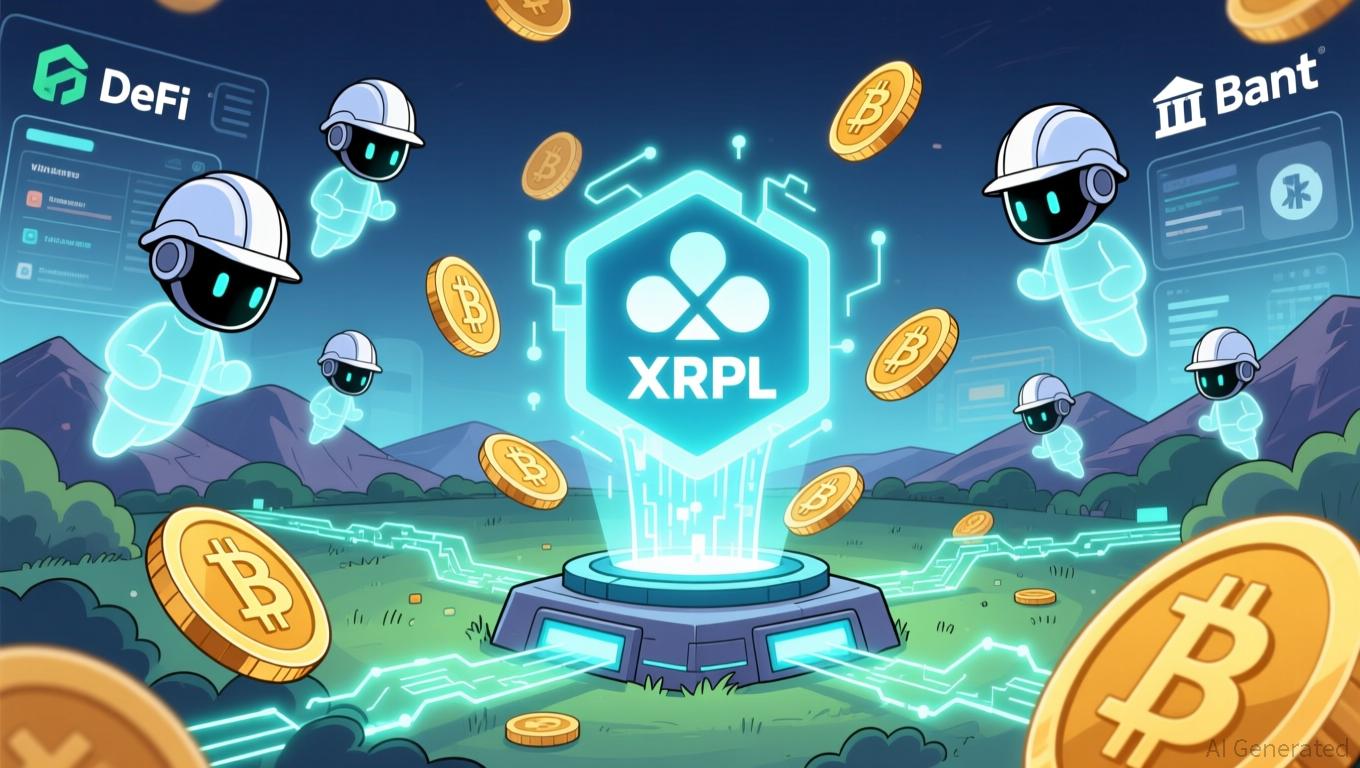XRP News Today: Ripple Faces a Staking Dilemma on the XRP Ledger: Balancing Trust and Incentive Conflicts
- Ripple explores XRP Ledger staking to boost DeFi integration and institutional use. - CTO David Schwartz outlines two staking models, but implementation is distant due to architectural complexity. - Staking aims to enhance security and incentivize token holders, aligning with crypto trends while addressing bank needs for cost efficiency and compliance. - Ripple also seeks Fed account access to improve RLUSD stability, leveraging direct Treasury conversions for faster settlements.
Ripple (XRP) is considering adding staking capabilities to its
The suggested staking models are designed to improve XRPL’s security and encourage token holders to participate over the long term. One proposal features a two-tier consensus approach: an inner validator group, chosen by stake, would handle ledger updates with slashing and staking, while an outer group would focus on governance. The alternative would keep the current Proof of Association system but use transaction fees to support zero-knowledge proof (ZKP) verification, allowing for more trustless validation.

Ripple’s investigation into staking reflects a wider movement in the crypto sector, where staking is now central to network security and user participation. For the banking sector, the advantages are evident: staking could lower operational expenses, boost transparency, and make cross-border payments more efficient—areas where XRP already has a foothold. J. Ayo Akinyele, who leads engineering at RippleX, believes staking could transform the incentives for both validators and token holders, creating a stronger ecosystem.
This move is particularly timely. Earlier this month, Ripple’s chief legal officer, Stu Alderoty, expressed support for a Federal Reserve proposal that would allow crypto companies to access so-called “skinny” Fed accounts. Such access could let stablecoin providers like Ripple bypass conventional banks, speeding up settlements and cutting costs.
Although staking on XRPL is still in the conceptual stage, Ripple’s emphasis on regulatory compliance and operational improvements highlights its goal to connect traditional finance with DeFi. For banks, Ripple’s offerings—from cross-border payment solutions to possible staking features—provide tools to adapt to a financial world increasingly influenced by digital assets. As the Fed’s proposed payment system changes progress, Ripple’s technological flexibility may shape its future role in financial innovation.
Disclaimer: The content of this article solely reflects the author's opinion and does not represent the platform in any capacity. This article is not intended to serve as a reference for making investment decisions.
You may also like
Astar (ASTR) Price Rally: On-Chain Usage and Institutional Engagement Fuel Lasting Expansion
- Astar (ASTR) surged 40% in late 2025 driven by on-chain adoption and institutional investments. - Q3 2025 saw 20% growth in active wallets and $2.38M TVL, supported by Agile Coretime upgrades and 150,000 TPS cross-chain infrastructure. - A $3.16M institutional investment and Astar 2.0's EVM compatibility highlight its multichain infrastructure vision and technical maturity. - Strategic partnerships with Animoca Brands and Sony Soneium, plus Chainlink CCIP integration, strengthen Astar's interoperability
DASH Soars 150% in a Week: Unpacking the Factors Behind the Privacy Coin’s Comeback
- Dash (DASH) cryptocurrency surged 150% in 7 days, driven by institutional adoption and thematic investment trends in blockchain privacy solutions. - The rally coincided with DoorDash (NASDAQ:DASH) stock's media attention, creating confusion between the crypto and equity assets despite unrelated fundamentals. - On-chain data showed increased DASH activity, reflecting retail interest in privacy-focused protocols amid post-FTX market shifts and DeFi optimism . - Analysts warn of risks from ticker symbol amb
Vitalik Buterin Supports ZKsync: Strategic Impact on Ethereum Layer 2 Growth and Institutional Investment in Crypto
- Vitalik Buterin endorsed ZKsync's 2025 Atlas upgrade, highlighting its role in Ethereum's scalability and institutional adoption. - The upgrade enables 15,000 TPS with near-zero fees via ZK Stack, enhancing liquidity sharing and Layer 2 interoperability. - ZKsync attracted $15B in 2025 inflows, with ZK token surging 50% post-endorsement, signaling institutional confidence. - Upcoming Fusaka upgrade aims for 30,000 TPS, strengthening ZKsync's position against rivals like Arbitrum and Optimism . - Buterin'
Google reports that cybercriminals accessed information from 200 firms after the Gainsight security incident